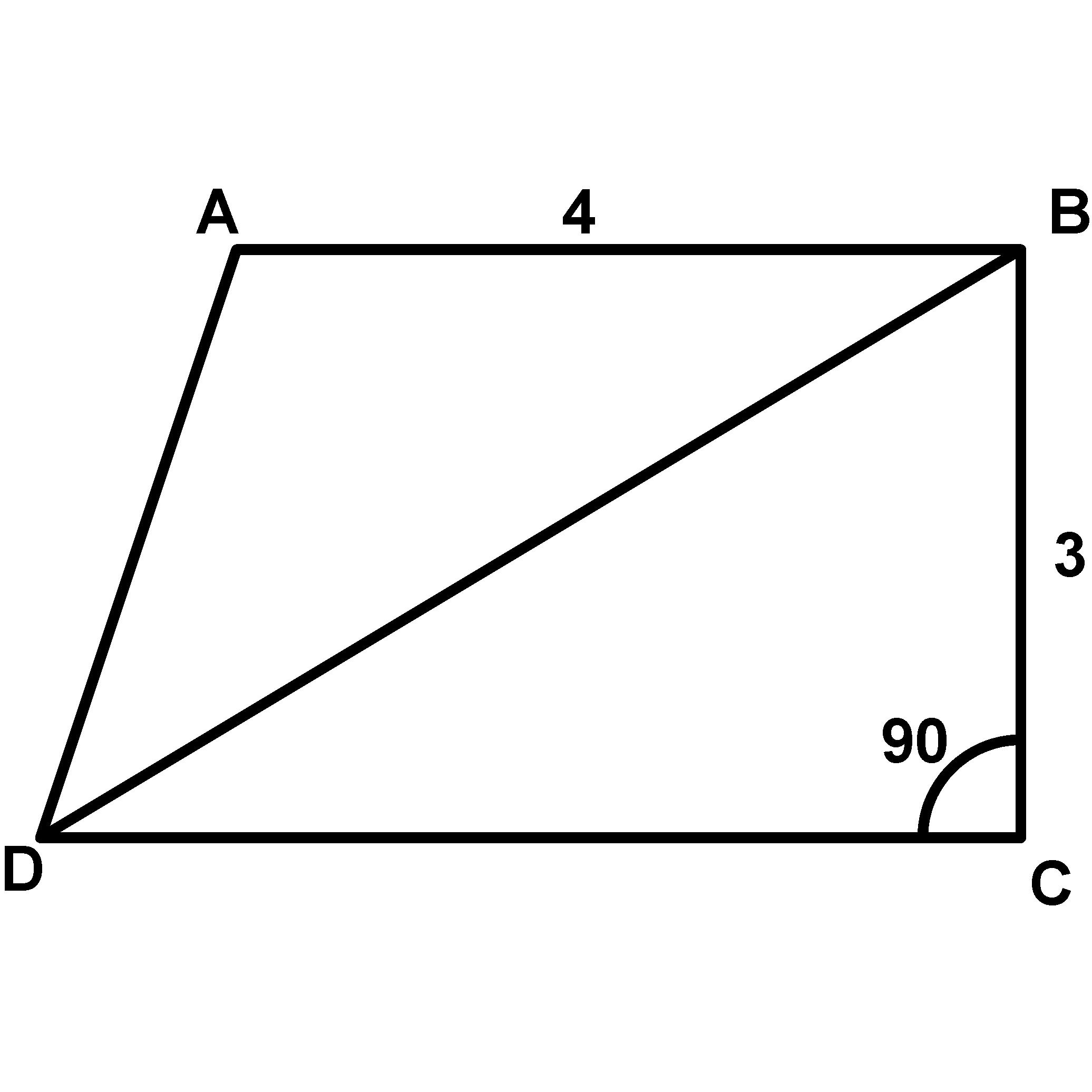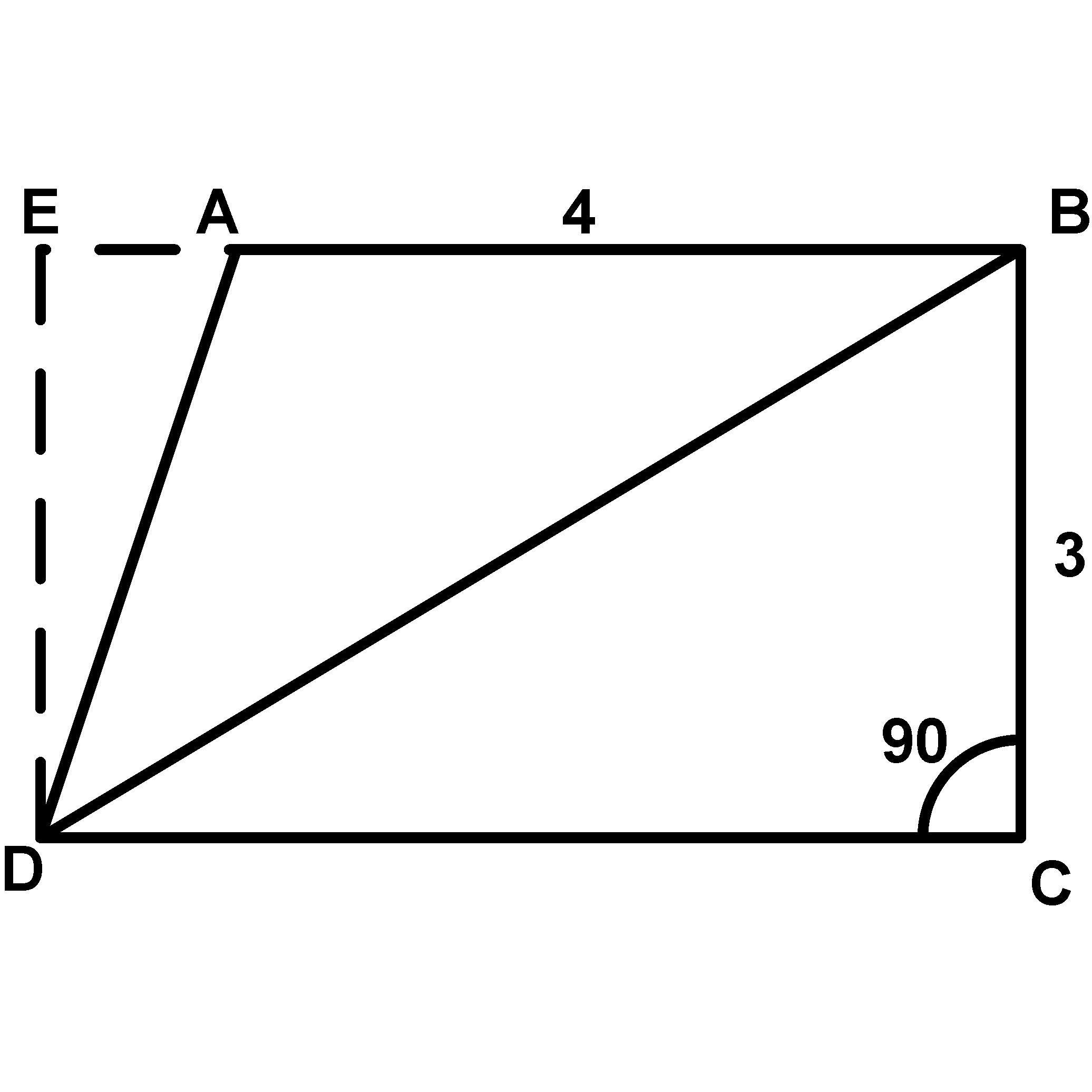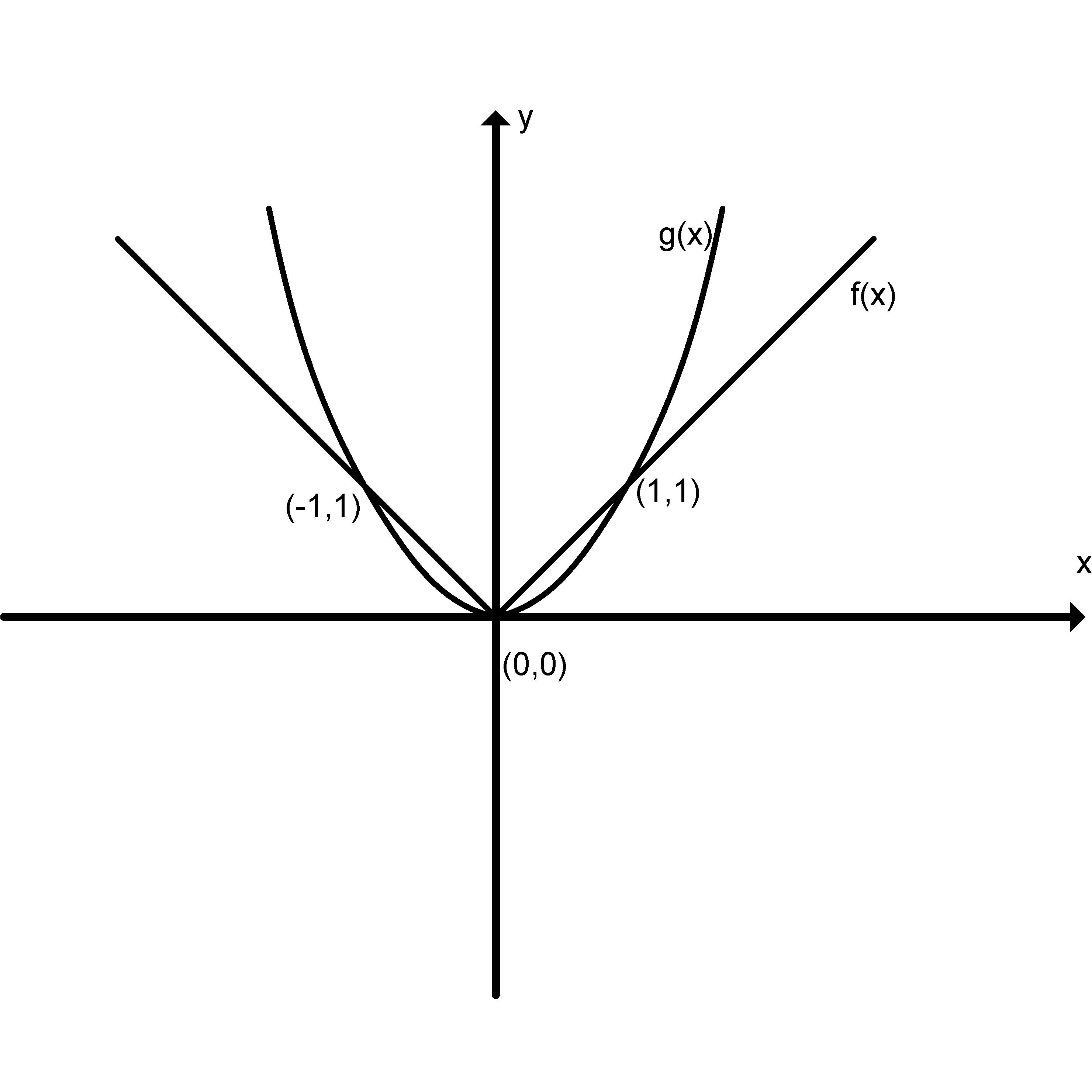Question #1: A rectangle is four times as long as it is wide. If the total area of the rectangle is 16 square inches, what is the length of the rectangle?
(a) 2 inches
(b) 4 inches
(c) 6 inches
(d) 8 inches
(e) 16 inches
The area of the rectangle is x·4x = 4x2.
4x2 = 16 and x = 2 inches.
The length of the rectangle is 4x = 8 inches.
Question #2: What is f(f(2)) if f(x) = x2 + 2?
(a) 12
(b) 26
(c) 38
(d) 42
(e) 48
f(2) = 22 + 2 = 6.
f(f(2)) = f(6) = 62 + 2 = 38.
Question #3:
Which of the following is a factored form of the expression 6x2 + x - 2?
(a) (3x + 2)(2x - 1)
(b) (2x + 2)(3x - 1)
(c) (3x + 2)(2x + 1)
(d) (3x - 2)(2x - 1)
(e) (2x + 2)(3x - 2)
Question #4: In the figure below, quadrilateral ABCD has AB parallel with CD. What is the area of triangle ABD?

(a) 3
(b) 4
(c) 6
(d) 8
(e) 9

AreaABD = (1/2)4·3 = 6.
Question #5: The radius of circle O is half the length of a side of square S.
| Column A | Column B |
| Area of circle O | Area of square S |
(a) The quantity in Column A is greater then the quantity in Column B.
(b) The quantity in Column B is greater then the quantity in Column A.
(c) The two quantities are equal.
(d) The relationship cannot be determined from the information given.
The area of the circle will be ¶·r2
The area of the square will be l2 = (2·r)2 = 4·r2
4 > ¶ because ¶ = aprox. 3.14, so the quantity in Column B is greater then the quantity in Column A.
Another simple way to solve this problem is to realize that a circle with the radius equal to half the length of a square could be inscribed in the square.
Question #6: If x2 - nx - 32 = 0 when x = 4, what is the value of n?
(a) -4
(b) 4
(c) 6
(d) -2
(e) 10
42 - n·4 - 32 = 0.
16 - 4n - 32 = 0.
n = -4.
Question #7: If f(x) = |x| and g(x) = x2, how many solutions has f(x) = g(x)?
(a) 1
(b) 2
(c) 3
(d) 4
(e) 5

We find that the 2 functions intersect each other in 3 locations, at
x = -1, 0 and 1.
Question #8: Given the list of integers: -2, 2, 0, 6, 8, 0, -5, 9, 10, 4, which of the following statements is true?
(a) mode < median < average
(b) median < mode < average
(c) median < average < mode
(d) mode = median < average
(e) average < median < mode
The median will be the mean of the two middle numbers, 2 and 4, so the median is 3.
The mode is 0, as 0 occurs the most in the list.
The correct answer is mode < median < average.
Question #9: A vehicle runs from town A to town B at a speed of 20 miles/hour while another vehicle runs from town B to town A at a speed of 60 miles/hour. Both vehicles start their trips at the same time and the distance between towns is 100 miles. How long does it take from the time they start running to the moment they are at the same point on the road?
(a) 1 hour
(b) 1 hour and 15 minutes
(c) 1 hour and 30 minutes
(d) 1 hour and 45 minutes
(e) 2 hours and 15 minutes
It take the same time for the 2 cars to meet: t = d1/(20 miles/hour) = d2/(60miles/hour). This is equation #2.
We solve the system of 2 equations to find d1 and d2.
From equation #2, 3·d1 = d2.
Then 100 miles = d1 + d2 = 4·d1, so d1 = 25 miles and d2 = 75 miles.
The answer is t = d1/20miles/hour = 25/20 = 5/4 = 1 hour and 15 minutes.
Question #10: If x + 4y = 6 and x - 2y = 3, which of the following statements is not true?
(a) y = 1/2
(b) x = 4
(c) y = 2
(d) xy = 2
(e) x + y = 9/2
In order to find the values of x and y, we multiply the second equation by 2 and add the 2 equations:
x + 4y = 6
2x - 4y = 3
3x = 12 and x = 4, y = (6 - 3)/4 = 1/2.
y = 2 is the only equality that is false.


